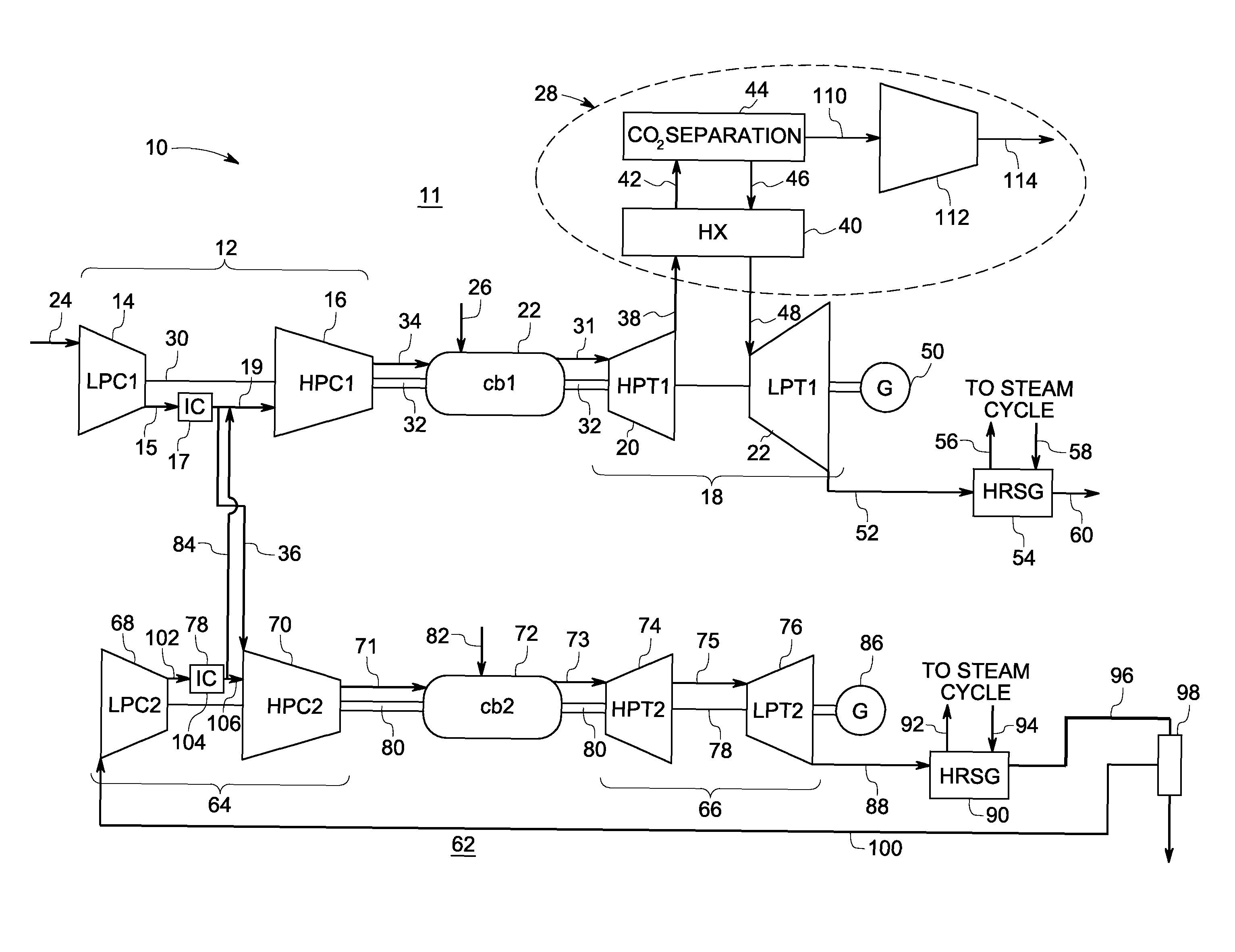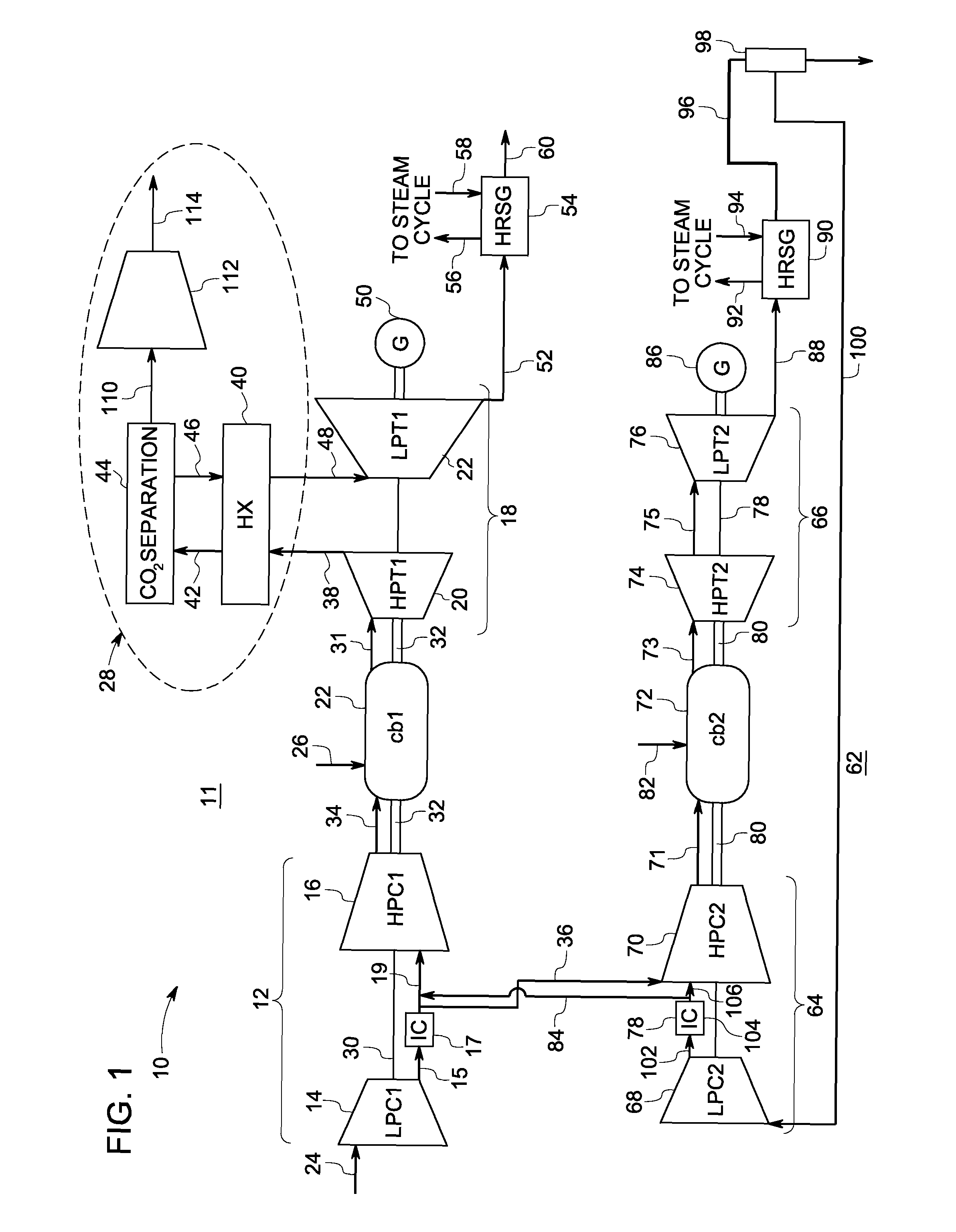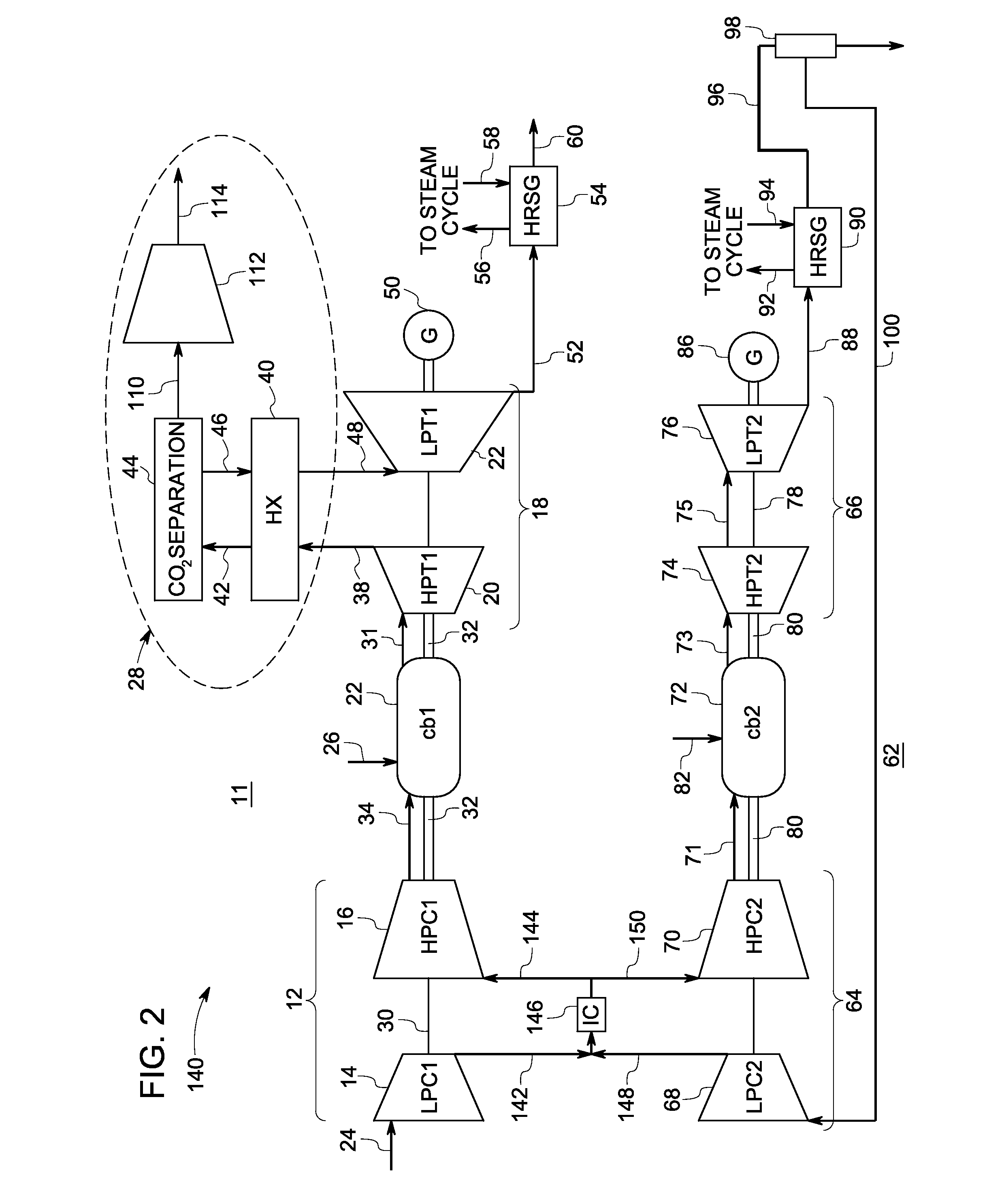Systems and methods for power generation with carbon dioxide isolation
a technology of power generation system and carbon dioxide, which is applied in the direction of electric generator control, machines/engines, mechanical equipment, etc., can solve the problems of large and expensive devices, inconvenient removal or recovery of carbon dioxide (cosub>2/sub>) from power generation system, such as the exhaust of gas turbines, and is generally not economical
- Summary
- Abstract
- Description
- Claims
- Application Information
AI Technical Summary
Benefits of technology
Problems solved by technology
Method used
Image
Examples
Embodiment Construction
[0014]The present disclosure provides a process for lowering CO2 emissions by separation of CO2 at high pressures in a power plant that utilizes gas turbines for power generation. CO2 is removed from the CO2-rich flue gases mid-way through the expansion pathway or the compression pathway of a gas turbine. As the concentration and partial pressure of CO2 is increased, a lower energy penalty is observed to remove the CO2.
[0015]One embodiment of the present invention provides for two or more exemplary gas turbine systems operating in a power generation system, which turbine systems are inter-linked midway through the compression pathways and share a common supply of compressed oxidant. As a result, the linking of the gas turbines leads to an increase in the CO2 concentration within the process, which is beneficial for the CO2 separation process. In one example, a compressor in a first turbine system supplies oxidant (via conduits) to a combustion chamber in the first turbine system and...
PUM
 Login to View More
Login to View More Abstract
Description
Claims
Application Information
 Login to View More
Login to View More - R&D
- Intellectual Property
- Life Sciences
- Materials
- Tech Scout
- Unparalleled Data Quality
- Higher Quality Content
- 60% Fewer Hallucinations
Browse by: Latest US Patents, China's latest patents, Technical Efficacy Thesaurus, Application Domain, Technology Topic, Popular Technical Reports.
© 2025 PatSnap. All rights reserved.Legal|Privacy policy|Modern Slavery Act Transparency Statement|Sitemap|About US| Contact US: help@patsnap.com



